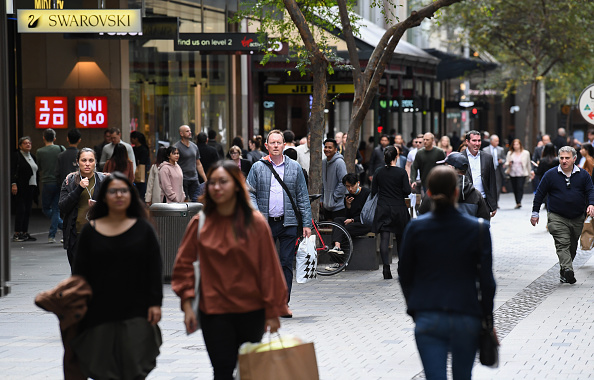Australians more mindful with spending as belt tightening moves another notch
Consumers are focusing on key areas of spending as the weight of interest rate payments impact budgets
Australian consumers are strapping themselves in for a bumpy ride, as they focus on key spending areas, new data reveals.
In signs that consumers are being more mindful with their money, the newly launched CommBank Household Spending Insights (HSI) Index shows that spending in July increased in areas such as household goods, transport, hospitality, education, insurance and communications.
This was offset by a decline in spending on more discretionary areas, such as recreation and food and beverage goods, as well as utilities, motor vehicles and household services.
The report showed that South Australia experienced the strongest growth of all Australian states in July, up 1.9 percent, followed by Victoria and NSW, both up 1.7 percent. However, over the past year, Western Australia came out on top, with spending increased by 3.5 percent, followed by the Northern Territory and South Australia, both at 3.4 percent. Over that same time period, spending fell in NSW, down -0.2 percent, with Victoria recording a fall of -0.3 percent.
CBA Chief Economist Stephen Halmarick said a dramatic hike in interest rates since May 2022 was clearly having a major impact on household budgets.
“The effects of 400bp of RBA interest rate increases is clearly reflected in a significant overall slowdown in household spending as measured by the CommBank HSI Index,” he said.
“Monetary policy is now restrictive and financial conditions will continue to tighten in the months ahead on the lagged effect of RBA interest rate increases and the fixed rate mortgage refinancing task. We continue to expect household spending to weaken further over the remainder of 2023 and 2024.
“While the RBA is likely to hold the cash rate at 4.1 percent for an extended period, we expect it will start lowering interest rates in March next year to 3.1 percent by the end of 2024 – in response to a slowing economy, inflation closer to target and a softer labour market.”
The CommBank Household Spending Insights Index has been compiled using payments data from about seven million CBA customers, equivalent to about 30 percent of all consumer transactions in Australia, to track latest trends across 12 categories in consumer spending. Mr Halmarick said the CBA payments data is now aligned to Australian Bureau of Statistics spending categories to be nationally representative and seasonally adjusted.
This stylish family home combines a classic palette and finishes with a flexible floorplan
Just 55 minutes from Sydney, make this your creative getaway located in the majestic Hawkesbury region.
Continued stagflation and cost of living pressures are causing couples to think twice about starting a family, new data has revealed, with long term impacts expected
Australia is in the midst of a ‘baby recession’ with preliminary estimates showing the number of births in 2023 fell by more than four percent to the lowest level since 2006, according to KPMG. The consultancy firm says this reflects the impact of cost-of-living pressures on the feasibility of younger Australians starting a family.
KPMG estimates that 289,100 babies were born in 2023. This compares to 300,684 babies in 2022 and 309,996 in 2021, according to the Australian Bureau of Statistics (ABS). KPMG urban economist Terry Rawnsley said weak economic growth often leads to a reduced number of births. In 2023, ABS data shows gross domestic product (GDP) fell to 1.5 percent. Despite the population growing by 2.5 percent in 2023, GDP on a per capita basis went into negative territory, down one percent over the 12 months.
“Birth rates provide insight into long-term population growth as well as the current confidence of Australian families,” said Mr Rawnsley. “We haven’t seen such a sharp drop in births in Australia since the period of economic stagflation in the 1970s, which coincided with the initial widespread adoption of the contraceptive pill.”
Mr Rawnsley said many Australian couples delayed starting a family while the pandemic played out in 2020. The number of births fell from 305,832 in 2019 to 294,369 in 2020. Then in 2021, strong employment and vast amounts of stimulus money, along with high household savings due to lockdowns, gave couples better financial means to have a baby. This led to a rebound in births.
However, the re-opening of the global economy in 2022 led to soaring inflation. By the start of 2023, the Australian consumer price index (CPI) had risen to its highest level since 1990 at 7.8 percent per annum. By that stage, the Reserve Bank had already commenced an aggressive rate-hiking strategy to fight inflation and had raised the cash rate every month between May and December 2022.
Five more rate hikes during 2023 put further pressure on couples with mortgages and put the brakes on family formation. “This combination of the pandemic and rapid economic changes explains the spike and subsequent sharp decline in birth rates we have observed over the past four years,” Mr Rawnsley said.
The impact of high costs of living on couples’ decision to have a baby is highlighted in births data for the capital cities. KPMG estimates there were 60,860 births in Sydney in 2023, down 8.6 percent from 2019. There were 56,270 births in Melbourne, down 7.3 percent. In Perth, there were 25,020 births, down 6 percent, while in Brisbane there were 30,250 births, down 4.3 percent. Canberra was the only capital city where there was no fall in the number of births in 2023 compared to 2019.
“CPI growth in Canberra has been slightly subdued compared to that in other major cities, and the economic outlook has remained strong,” Mr Rawnsley said. “This means families have not been hurting as much as those in other capital cities, and in turn, we’ve seen a stabilisation of births in the ACT.”
This stylish family home combines a classic palette and finishes with a flexible floorplan
Just 55 minutes from Sydney, make this your creative getaway located in the majestic Hawkesbury region.


















